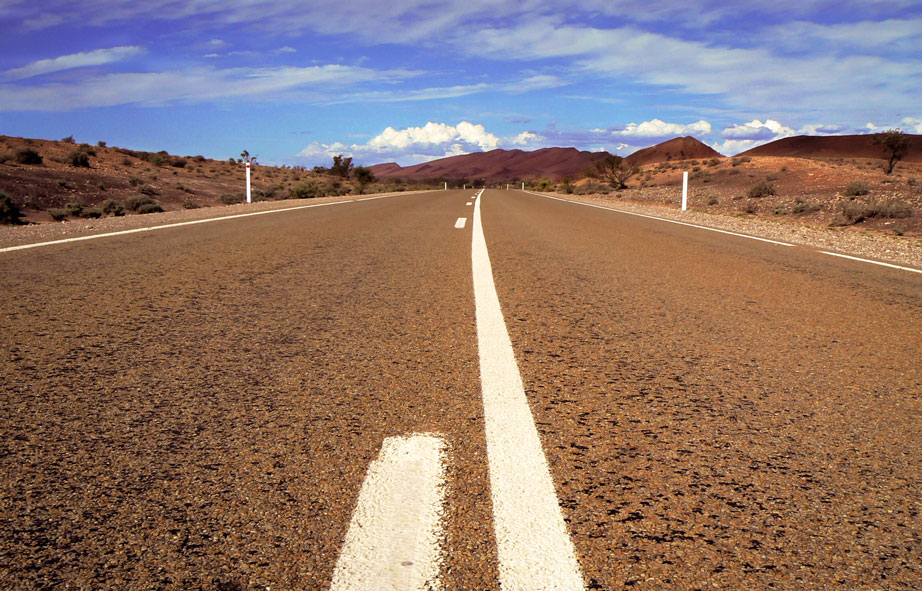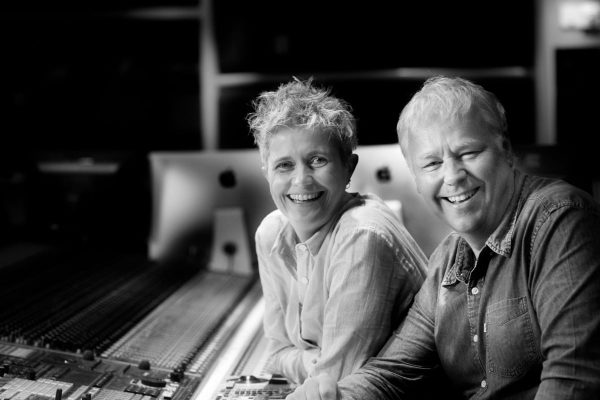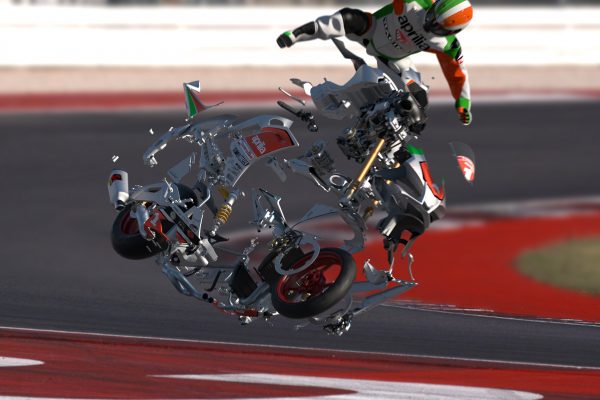Director Jim Loach is no stranger to Australian shores. His film Oranges and Sunshine (2010) was shot in South Australia, but his new yet-to-be-titled feature, takes Loach and his crew way out bush. Deep within the ochre sands and heart of the mid- Australian desert.
By Nicole Boyd
According to its IMDB page, the completed film tells the story of a 12-yr old boy, trying to escape his dysfunctional, multi-generational Spanish family. It’s a very Spanish film, shot within a multicultural Australia.
The film stars Carmen Maura (Women on the Verge of a Nervous Breakdown), Edward James Olmos (Miami Vice), Antonio de la Torre (Volver), Paz Vega (Spanglish) and newcomer Michael Crisafulli, playing the young protagonist. The script was penned by Judy Morris (Happy Feet 2).
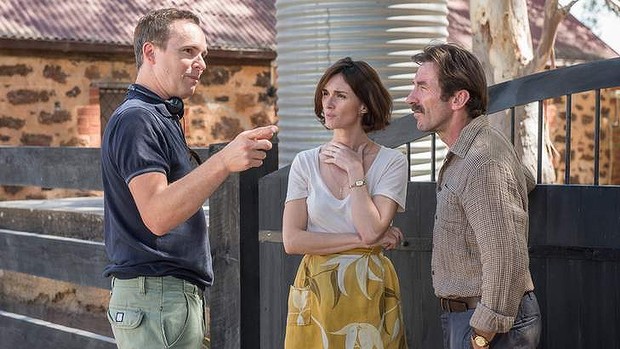
Director Jim Loach with Paz Vega (centre) and Antonio De La Torre on the set of his new film (image: SMH).
“This is a Spanish family but it could easily have been an Australian family, an English family, an American family,” Loach says. “Thematically, you’re dealing with things that are universal, and that’s why I wanted to make it.”
Continuing, Loach said, “When we first talked about the film, I sat down with the producers and said, ‘So, just to get this straight, the basic idea is to take a bunch of Spanish actors, take them to Australia, put them in the desert and make a film with an English bloke?’ “And they were like, ‘Yeah, we’re up for that’.”
“There are well over 40 million people who speak Spanish just in the US. Edward James Olmos is a real tangible marketing element, and many of the other actors have great profile, especially Paz Vega and Carmen Maura. I would hope a film like this has some commercial appeal to markets we don’t usually have access to” said Producer Tim White (source).
The seventy man crew, moved locations between South Australia’s Barossa Valley and Flinders Ranges, with the production’s homebase at the Adelaide Studios soundstages. The film received additional funding from the South Australian Film Corporation, allowing it to be a far less costly film to make than if it had been filmed elsewhere.
For Cinematographer Denson Baker ACS, having to defend his gear and crew in the midst of the worst fly plague seen in Australia in 20 years, wasn’t something he ever wanted on his resume. Let alone the heat of the Australian desert’s daylight hours or the near freezing temperatures at night. It meant needing to be able to shoot each scene, with a fast setup and turnaround.
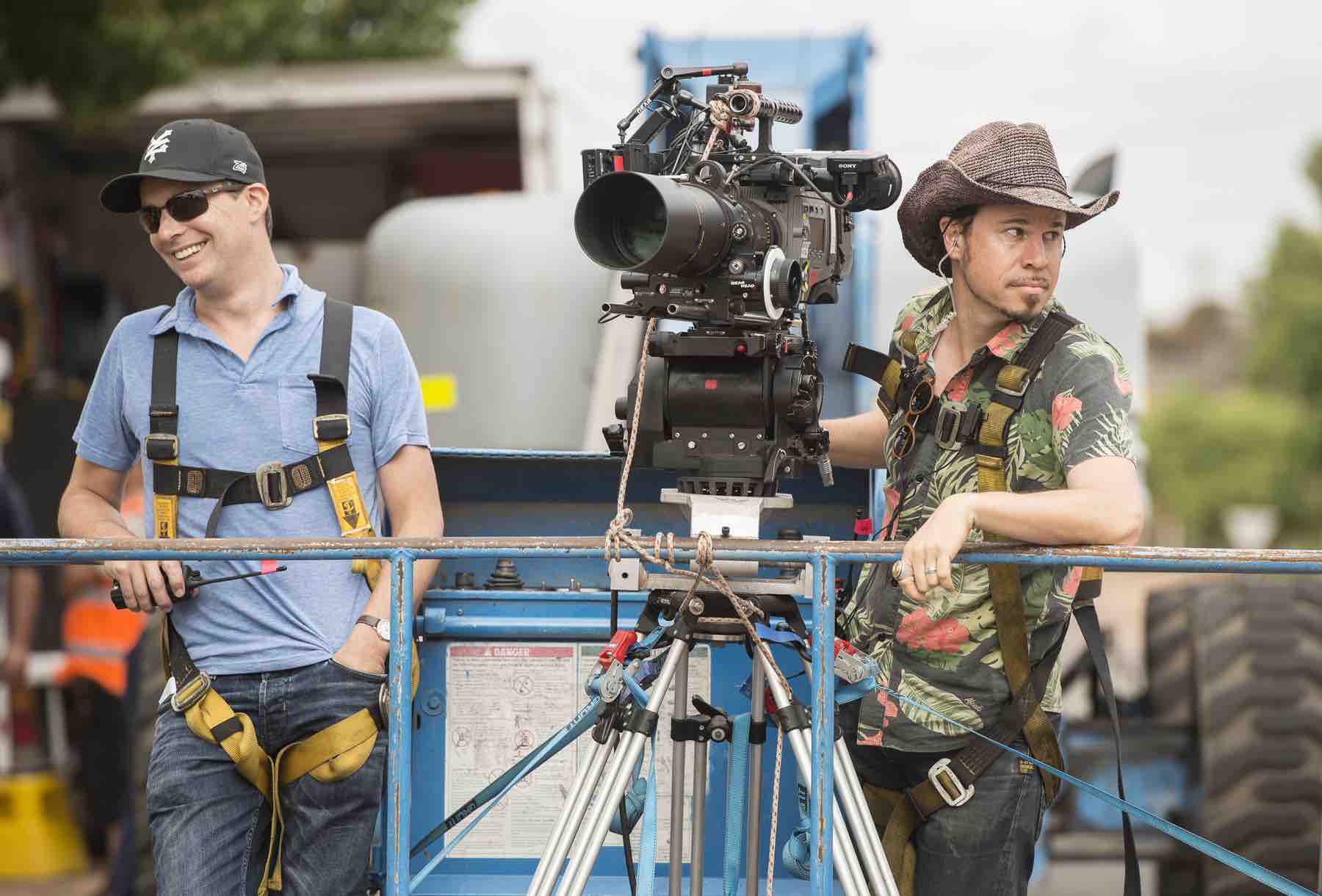
Jim Loach (left) and Denson Baker ACS (right), on the set of Loach’s new feature film.
PRE-PRODUCTION
When it came time to look at cinematic options on the new feature, Loach and Baker realised it wasn’t going to be feasible to shoot on film. Previously, the pair had shot on 35mm film and were really happy with the results. But the new feature was being shot in remote locations, meaning there was no access to a lab. In fact these days, there are few locations anywhere in the world that offer lab services, let alone in out-outback Australia.
Discussing a previous shoot, Baker told us that he’d had a great experience using the F65 procam on Loach’s independent feature The Dark Horse, which was shot in New Zealand in 2013. So, it seemed like a natural fit to use the same camera again on their new collaboration.
“I wasn’t the only one who was really happy with the look we achieved. Park Road Post Production (Peter Jackson’s post house) had also been really enthusiastic about working with the images. I was fortunate on The Dark Horse to do extensive comparison tests in pre-production with three other cameras and a variety of lenses and filters… followed by 33 days of principal photography, meant I knew the camera very well and what it was capable of by the time it came to talk cameras for Jim’s picture,” Baker said.
“Jim, like myself, is a film purist,” Baker continued. “Production flew me to Sydney to shoot a series of camera tests that I could screen for Jim when he arrived in Australia. I knew the F65 was the way to go, so for me it was about looking at lens and filter combinations. I tested pretty much every lens set that I could get my hands on and I shot tests that I knew would reflect the lighting style, framing and lensing that would excite Jim. I then took the tests to South Australia where Marty Pepper from Kojo put a juicy grade on all the tests and we put them up on the big screen in 4K at the SAFC. When Jim walked in we had a nice frame up on the screen and he immediately said, “Whoa! That looks great doesn’t it!” and with that he was convinced that the [camera] was going to deliver cinematic, big screen-worthy images. We chose to shoot with a set of Leica Summicron-C T2.0 lenses and also a set of Kowa Anamorphics for flashback sequences. I also used a variety of filters to achieve a subtle warming, textured feel which also added a bit of filmic halation to the highlights.”
THE GREAT AUSTRALIAN BLUE-ARSED FLY
If you’ve ever spent time in the Aussie outback, then you’ll know that there are ridiculous amounts of bugs, even in daylight. The flies aggressively attack any watery places on your face, such as eyes, mouth and nasal cavity. They’ll even wiggle into your ears, looking for water.
“We shot a wide variety of locations, under a wide variety of conditions starting in the Barossa Valley, in vineyards and on dirt roads, and then we spent two weeks in the Adelaide Studios shooting interiors. From there we moved to the Flinders Ranges for day and night exteriors where we had some big set-ups and some long drives into gorges and open plains. When we started our day-for-night shooting in Parachilna we encountered what many were calling the worse fly plague in over 20 years. It became near impossible to shoot as the cast would have so many flies on their faces and up their noses during a take. So to overcome them we built a makeshift studio in a marquee at the Prairie Hotel and shot our mid shots and close-ups in a contained environment and our wide shots on location with a bit of fly removal in post. This part of the shoot was pretty grueling but great fun and the landscape out there is absolutely stunning. All in all, this was a great shoot and intense at times.”
After reviewing the script, Baker knew his biggest challenge was dealing with the amount of night scenes in the film, particularly in the desert. The pair put their heads together and decided on shooting those scenes using a “day-for-night technique” which meant shooting in broad daylight, but making it appear as night. The sun emulates the moon and in post, the sky is replaced with stars.
We’ve yet to see this pulled off effectively in cinema, it’s usually painfully obvious a neutral density (ND) filter has been placed over the lens, giving everything a muted grey/bluish look rather than true evening light falls. Baker felt assured it was working, truth be told, sometimes it just isn’t possible to shoot at night.
“This worked well until we had some tough weather and [the] fly plague to contend with which made the shoot very challenging,” Baker added. “To achieve the day-for-night in the Flinders Ranges and in open desert plains, I needed a format that would capture a very wide latitude of exposure. I wanted to be able to control the shadow detail in the harsh Australian sun and the day-for-night was never going to work if we had blown out highlights. That’s where the F65 came in as it gave me the ability to capture a lot of detail in a wide range of exposure, darker skin tones, dark and moody interiors, hot backlit exteriors, and some big night exterior set-ups. Production designer Felicity Abbott and I had talked at great length about textures and a subtle colour palette throughout the film. This meant we needed [to] capture those textures in a pleasant way with lots of clean detail but still have a softness and non-digital quality to it. It is something which is hard to put into words but you really feel it when you see the images projected on a 40 foot screen. I am also a fan of the mechanical shutter, as it gives a much more smooth and natural motion blur, particularly with fast motion action or a handheld shot.”
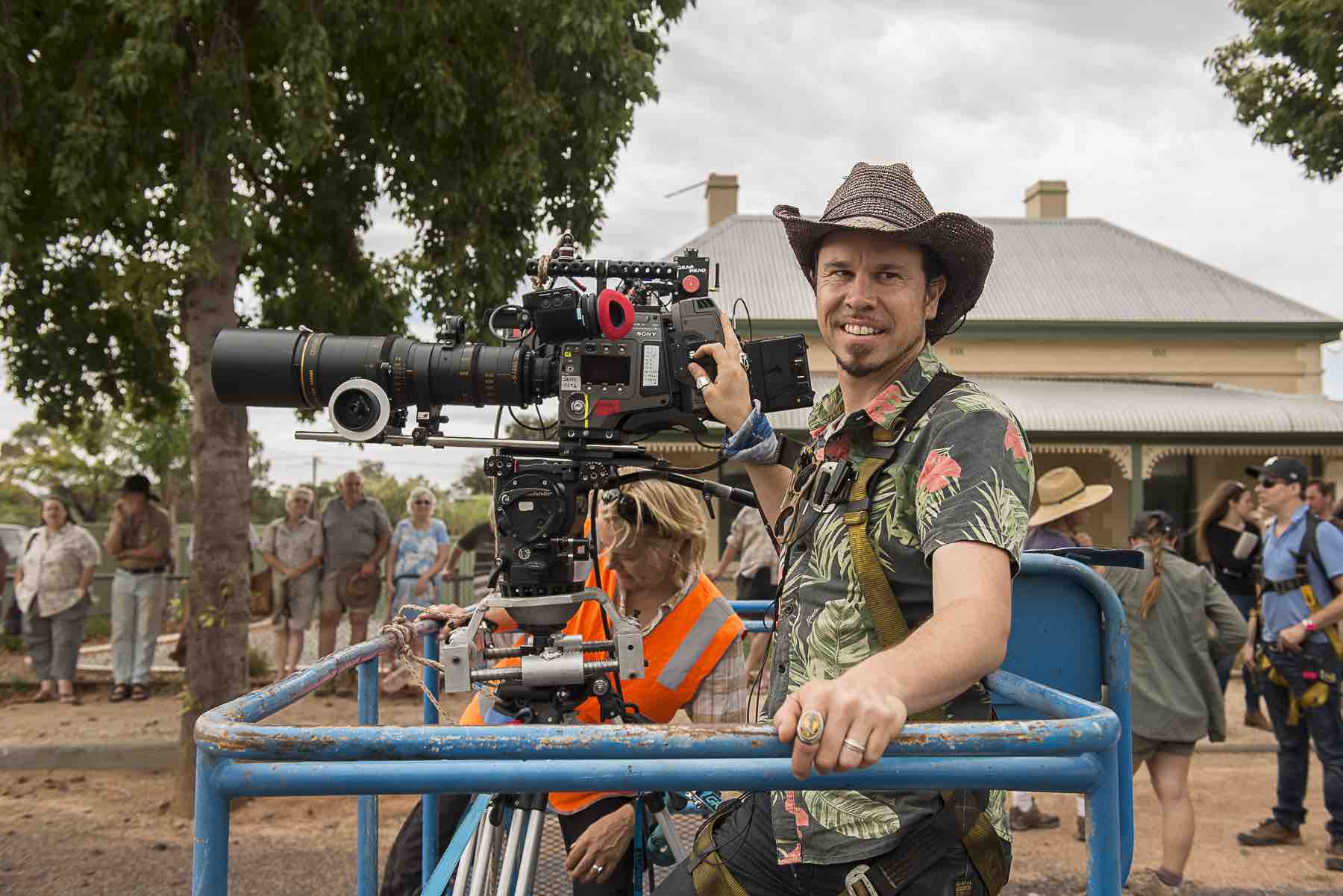
Denson Baker ACS using the Sony F65, on the set of the latest Jim Loach movie in Australia
USING LUTS
Whilst still in pre-production Kojo’s Marty Pepper and the “A camera” team of Jules Wurm and Maxx Corkindale set up two separate LUTs for the production. One was a general LUT which Baker said reflected the look of the final grade and the other was a DAY 4 NITE LUT. The latter was useful, for shooting tests so Baker could work out the best way to achieve the look he envisioned.
“This way everyone on set could get a sense of the final look of those scenes while we where shooting them in broad daylight,” Baker explained. “I found that our general LUT wasn’t always the best choice for all lighting situations and turned more to the REC 709 (800%) setting to get a truer sense of how the images where looking. I find it is good to be judging your pictures with a consistent LUT and monitoring set-up and it took us a few days to get our OLED monitors showing us a true representation of what was being captured. It felt great when we had calibrated everything in pre-production – cameras, monitors, LUTs, the DIT’s workflow and the rushes screening room all the way through to the edit suite monitors. Then we had a situation where, what Jim and I were looking at on-set is exactly what we saw projected in rushes and what the editor was looking at in their suite. It took a while to get to that point but when we did it gave us a confidence that allowed us to focus on the creative and think less about the technical concerns of cinematography.”
During tests Baker shot in both RAW SQ and RAW Lite. Kojo then put both images side by side, zoomed in and were able to pull a clean key of blue skies equally with both, showing they could shoot the film in RAW Lite (a quarter of the size of RAW SQ). The movie was then shot in 4K with DIT Ian Routledge creating rushes for editorial, Loach, Baker and the producers all with the same LUT.
THE RIGHT STUFF
Shooting in the heat of the Aussie desert meant the crew needed to get their scenes shot fast, but without losing integrity in the film’s production values. Both factors that Baker, not only had to deal with, but embrace if he was going to get the look and feel he envisioned.
“When the actors are primed and ready to shoot, the last thing you want to do is halt production while you swap out a filter,” Baker said. He came to appreciate the camera’s ND filter (whoomp, there it is) wheel, saying it was good in situations where, “I want to adjust for exposure between takes or want to quickly alter the depth of field of a shot. I also used the iPad app which allowed for quick changes to camera settings and remote operation.”
The scope of this film was a departure to both Loach and Baker’s usual style of shooting. Which meant that finding the right gear to work with was even more important than usual.
Baker said: “This film is different to Jim’s and my previous work, it has a lot going on visually and thematically. We have moody, intimate interiors, epic big scope exteriors, crane shots, handheld action, delicate and subtle camera moves, a number of VFX sequences, deserts, vineyards, car rigs, go-cart rigs and helicopters. We got to use the [same camera] on all set-ups and sometimes found ourselves using different camera bodies with specialist camera mounts when we went handheld or for tight car interiors. We shot with two F65 cameras (Miles Rowland was our B-Camera/2nd Unit DP) and [they] performed faultlessly. We only had one issue in the final week of shooting when our A-camera went down due to a communication issue between the camera head and the recorder mounted to it but that was resolved the next day. We shot aerials though the Flinders Ranges with Aerial Film Australia in their ShotOver K1 gimbal mount. It is a beautiful set-up and it allowed us to use the F65 with a 24-290mm zoom, our same filter package and control the camera from a laptop. Being able to swing ND filters while in the air was a massive bonus as we could shoot an afternoon backlit landscape and swing the rear ND filters out one by one as we went into dusk.”
IN POST
Post production was done in London, using Met Film Post. Data was backed-up initially on set and depending on the location conditions, further backup and transcoding was undertaken at base camp with the custom LUTs being applied in Resolve. Editorial used Avid HD DNX 185 material to maximise the detail in the image for the day-for-night work that would be undertaken. Noise and other details were not compressed out or into the editorial images so that quick and efficient assessment of the footage could be made without always having to look into the RAW. The film was cut in Avid and preconforms of various VFX sequences were split off early on in the editing process to allow VFX work to commence.
The film was graded by Senior Colorist and Online Editor at Met Film Post, Mat Troughton who said, “The grade was completed from the RAW Lite data in Baselight. We worked from an S-Log2 base, debayering from the 4K RAW data into the 2K distribution format that would form our DSM. We worked in P3 RGB colour space, relying on Baselight’s integrated colour management to allow perceptually identical versions for the Rec709 broadcast version. From day one I was impressed with how much of the latitude sat within the S-Log curve. I was surprised at how rarely I had to produce split exposure composites – going into the RAW and altering the exposure indexes for especially bright or dark parts of the scenes – then comping them in. This, especially so, given the huge exposure ranges present in a landscape like Australia. From the dark oppressive, shuttered interior of the family’s house, to the bright skies and parched sands of the outback. Rarely would we be in a position where a creative choice to bring out detail in the shadows or highlights would be thwarted by having too much noise or not enough latitude.”
When grading the day-for-night portions of the film, detail needs to be maintained across the characters’ faces, while still holding a full range within the sky and clouds that, if clipped at all, would ruin the day-for-night effect and make it obvious something was amiss.
Discussing this issue, Troughton said that Baker, “managed to keep a very natural tone curve in both regions for us – avoiding the sometimes unnatural effects seen in skin and sky as things get pushed. The encoding of the Lite content provided clean key lines even as we found ourselves having to pull some of the day-for-night VFX work from the Baselight without the more detailed tools often required to work with very high contrast foreground/background keying. There are particular advantages for VFX-heavy films, especially when shot at the higher data rates. The quality of the images and the dynamic range, the way that the tone curve of the S-Log recordings falls very nicely on faces and skin was a great thing to see. It’s always the case when choosing a camera, but always test the thing before you make a choice. People chase numbers and tech specs, but ultimately – each camera has its own texture and feel, especially when the going gets tough and the exposure index starts to get stretched.”
Shooting on the film wrapped back in April, and is slated for release sometime in 2015.
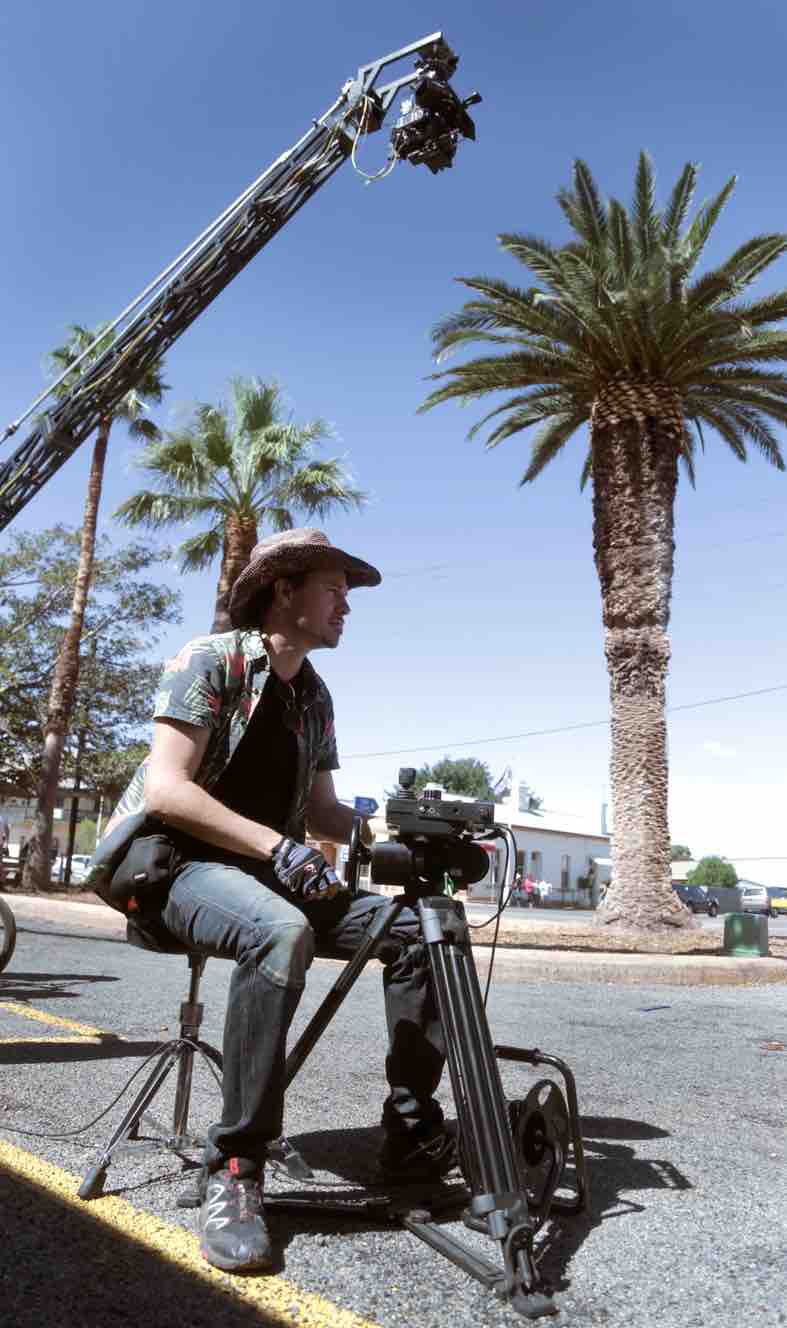
Denson Baker ACS, using the F65 on a crane with remote gimbal, on the set of Jim Loach’s new feature film.
Feature image: shot by Jasper Hazebroek at the Flinders Ranges, South Australia, copyright: Nicole Boyd
Source: media release and Sydney Morning Herald

